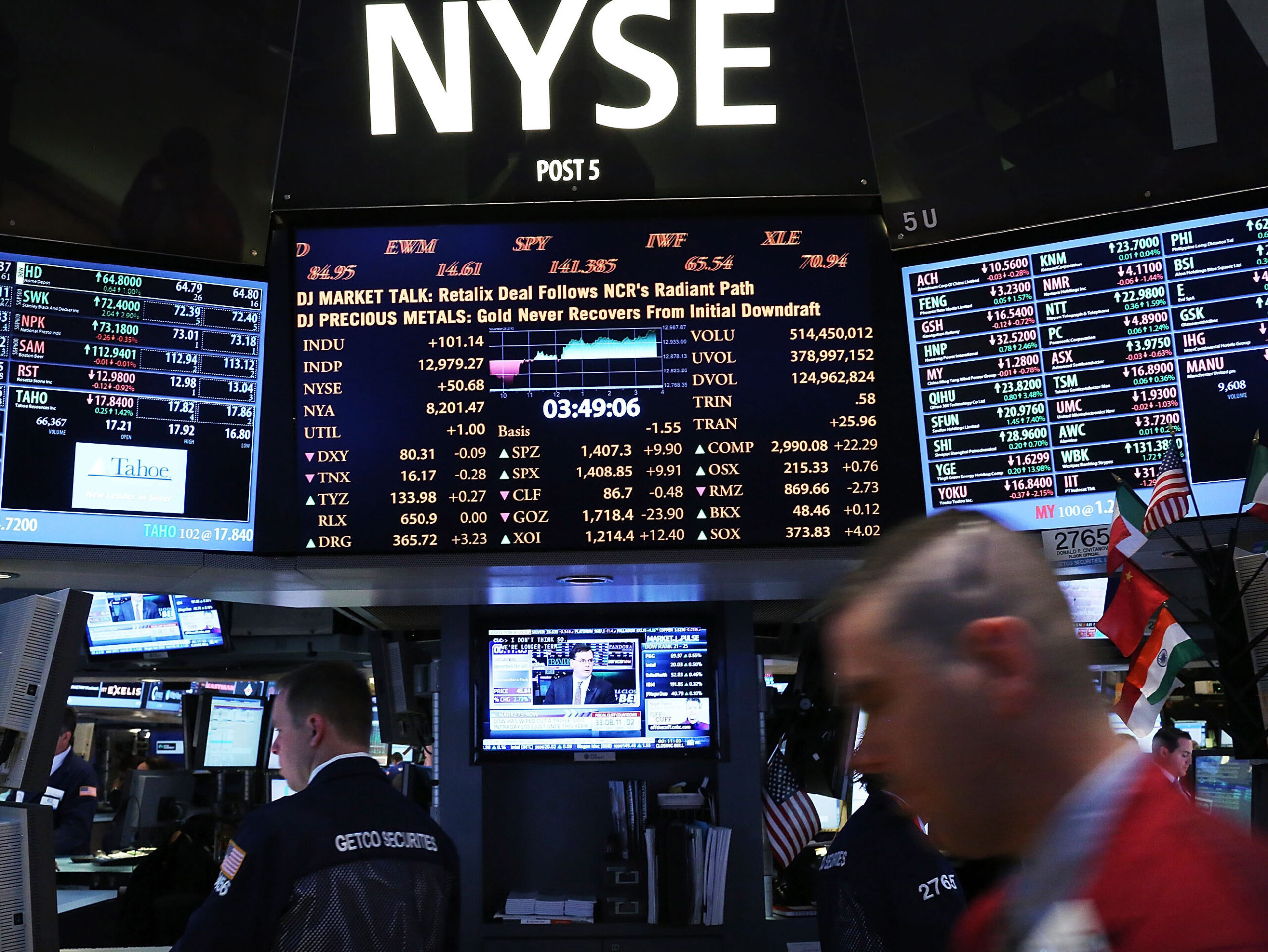
- Indices
- Stocks
S&P 500 falls 3% on recession fears
Do you want to know how to make money from this?
Register for free and get expert advice, access to a training course and webinars.
Key points:
- The Nasdaq and S&P 500 posted their biggest three-day decline since June 2022.
- Weak economic data, especially the U.S. jobs report, fueled fears of a possible recession.
- The Federal Reserve’s decision to keep interest rates on hold has left investors unhappy.
U.S. stocks ended Monday with significant losses, with the Nasdaq and S&P 500 each down at least 3 percent. This was amid last week’s sell-off and concerns about a possible U.S. recession, as well as a sharp drop in Apple shares on news that a major investor was cutting its stake.
The Dow Jones Industrial Average fell 1,033.99 points, or 2.6 percent, to 38,703.27. The S&P 500 fell 160.23 points, or 3.00 percent, to 5,186.33. The Nasdaq Composite Index fell 576.08 points, or 3.43 percent, to 16,200.08.
The market decline was the most significant since the pandemic
All three major stock indexes posted their biggest three-day declines since June 2022, with the Nasdaq and S&P 500 closing at their lowest since early May.
Tech giant Apple shares fell 4.8% after Berkshire Hathaway halved its stake in the iPhone maker. Billionaire Warren Buffett, who runs Berkshire, helped the company’s cash grow to a record $277 billion.
Other tech leaders including Nvidia, Microsoft and Alphabet also fell. Meanwhile, the Cboe Volatility Index, a gauge of market anxiety on Wall Street, hit its highest since October 28, 2020. None of the 11 sectors of the S&P 500 index escaped the decline, with the technology sector seeing the biggest decline.
The S&P 500 fell more than 4% to a session low of 5,119.26. Investors were particularly drawn to a group of seven major technology companies that had previously fueled the indexes’ growth. This segment was one of the main drivers of the current sell-off.
Should we expect a recession?
Fears of an impending recession have caused significant turmoil in global financial markets, prompting investors to sell off risky assets en masse. The reaction came after weak macroeconomic data last week, culminating in a U.S. employment report that showed growth slowing.
Investors are concerned that the economy could be headed for a deeper downturn than previously expected, and doubts have grown over the Federal Reserve’s decision to keep interest rates on hold at its latest policy meeting.
Chicago Federal Reserve President Austan Goolsbee, while downplaying concerns about a possible recessionary scenario, stressed the need for the central bank to be flexible in responding to changing economic conditions to avoid over-tightening monetary policy.
Markets stabilised somewhat in the middle of the trading session after the release of data on activity in the US services sector, which showed a recovery from a four-year low. The growth of orders and employment in this sector supported market optimism.
However, the negative impact of weak employment data and a contraction in manufacturing activity in the world’s largest economy intensified amid pessimistic forecasts voiced by large US technology companies. The Nasdaq Composite index, reflecting the dynamics of technology companies, confirmed the entry into the correction phase on Friday.
Market participants significantly increased the probability of the Federal Reserve cutting interest rates by 50 basis points at its next policy meeting in September. According to the FedWatch tool of the CME Group, the probability of such a scenario is estimated at 86%, and the probability of a cut by 25 basis points is 14%.
“Today’s selloff is a direct continuation of the anxiety that gripped markets last week,” said Neville Jhaveri, portfolio manager and head of the Empiric LT Equity team at Allspring in Washington. “The initial catalyst was the employment data, which clearly convinced investors that more action was needed from the Fed as employment growth slowed,” he added.
Do you want to know
How to make money from the news
Register for free and get:
- Expert consultation;
- Access to the training course;
- Opportunity to participate in webinars

